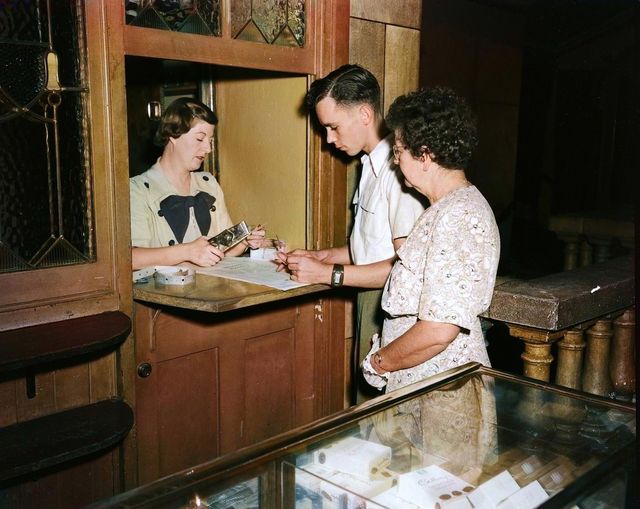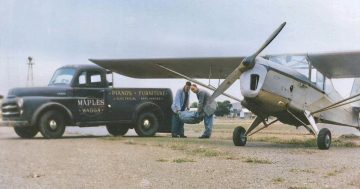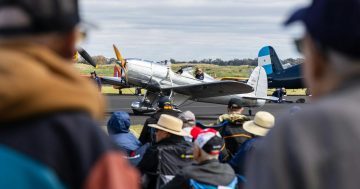
Patrons buying tickets at the Capitol Theatre box office in the 1950s – note the boxed chocolates for sale behind them. Photo: Charles Sturt University Archives (coloured using Palette).
Today the Museum of the Riverina takes us back into the Capitol Theatre on Gurwood Street, where we find ourselves buying a ticket at the box office.
After long negotiations, permission was given for the Capitol Theatre to be erected in Wagga, with the agreements being signed in March 1929. It was to be built on ”up-to-date lines” and leased by Zachariah ”Jack” Kouvalis of Sydney, for 20 years, at an annual rental of £3400 (about $320,000 today).
Kouvalis was a well-known theatre tycoon who invested in numerous venues across the country.
The theatre opened in December 1931 following a lengthy delay during which there was a growing conviction that the venue was doomed to remain closed for an indefinite period – possibly years!
Mr Kouvalis opened Wagga’s Wonderland Theatre as a talking-picture show and proposed to spend thousands of pounds on the completion of the Capitol’s fittings and furnishings.
Additionally, Mr Kouvalis was negotiating for the purchase of the exclusive picture rights of Wagga from the Smythe Bros, of the Strand Theatre.
Mayor Edward Easter Collins officially opened the Capitol, which in its heyday ranked with the best of the ”palaces of pleasure” in the Commonwealth.
With its sloping floors, all were able to see the screen without obstruction by the heads in front.
The chairs were comfortably upholstered and patrons were directed to them by dainty ushers in black and gold. One can be seen here behind the ticket counter.
Films were screened on Monday, Tuesday, Wednesday and Thursday nights, with a matinee on Thursdays, and in 1931, were promoted as being ”worthy of the expensive setting”, being nearly all British – music, comedy, dancing, drama and travel, all combined in entertainment planned to suit all tastes.
Some 1050 unreserved stall seats were available for the opening night. Sadly, the Capitol is another of Wagga’s grand theatres that no longer exist.
It closed on 10 April, 1965, and sat for five years with its future uncertain. In 1970, Whelan the Wrecker won a six-week contract for its demolition, and tragically, Wagga lost another jewel in its crown in the opening months of that year.
















